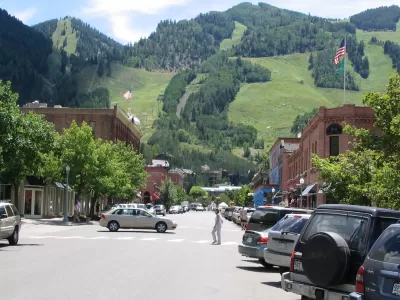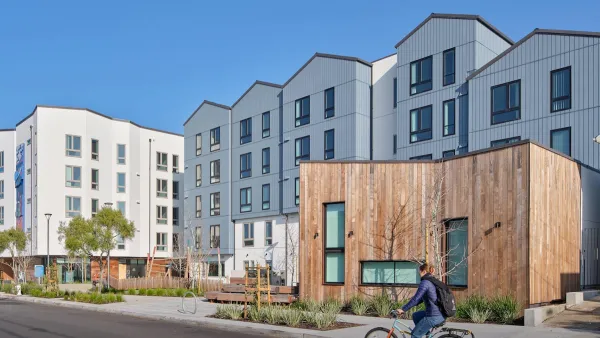As residents of Aspen, Colorado's limited supply of workforce housing begin to retire, they're staying put, creating a new affordable housing crunch for younger workers.

Aspen, Colorado's affordable housing program has provided much needed housing for the city's workers, allowing those without seven-figure incomes to live in the city in which they work. However, the already limited supply of housing for the town's workforce is shrinking even further as residents begin to retire. Ben Markus of Marketplace reports that the city is facing what one official describes as "a ticking time bomb," with half of the residents of the affordable units expected to retire in 10 to 20 years and city limitation on new development restricting supply.
...what started as workforce housing is now showing its age, increasingly becoming retirement housing, raising fundamental questions about the program.
Take [74 year old resident Sara Garton]’s case. Her Aspen condo could sell on the open market for $1 million, but since it’s part of the affordable housing program, she estimates she could only get about $170,000 for it. So why would she sell?
There isn’t a retirement home here, and she doesn’t want to leave the city she’s called home for decades.
Aspen is a town where fund managers drive Ferraris and bartenders get around on bicycles. The program was built so both could live here.
“The people who created the program back in the 70s, they never thought they were going to get old,” City Councilman Adam Frisch said. “And they never thought the buildings were going to get old.”
Markus reports that for now younger workers have to rely on a lottery system which parcels out available units to residents, otherwise they're forced to live miles away and commute in.
FULL STORY: Aspen's affordable housing program is showing its age

Planetizen Federal Action Tracker
A weekly monitor of how Trump’s orders and actions are impacting planners and planning in America.

Chicago’s Ghost Rails
Just beneath the surface of the modern city lie the remnants of its expansive early 20th-century streetcar system.

San Antonio and Austin are Fusing Into one Massive Megaregion
The region spanning the two central Texas cities is growing fast, posing challenges for local infrastructure and water supplies.

Since Zion's Shuttles Went Electric “The Smog is Gone”
Visitors to Zion National Park can enjoy the canyon via the nation’s first fully electric park shuttle system.

Trump Distributing DOT Safety Funds at 1/10 Rate of Biden
Funds for Safe Streets and other transportation safety and equity programs are being held up by administrative reviews and conflicts with the Trump administration’s priorities.

German Cities Subsidize Taxis for Women Amid Wave of Violence
Free or low-cost taxi rides can help women navigate cities more safely, but critics say the programs don't address the root causes of violence against women.
Urban Design for Planners 1: Software Tools
This six-course series explores essential urban design concepts using open source software and equips planners with the tools they need to participate fully in the urban design process.
Planning for Universal Design
Learn the tools for implementing Universal Design in planning regulations.
planning NEXT
Appalachian Highlands Housing Partners
Mpact (founded as Rail~Volution)
City of Camden Redevelopment Agency
City of Astoria
City of Portland
City of Laramie





























